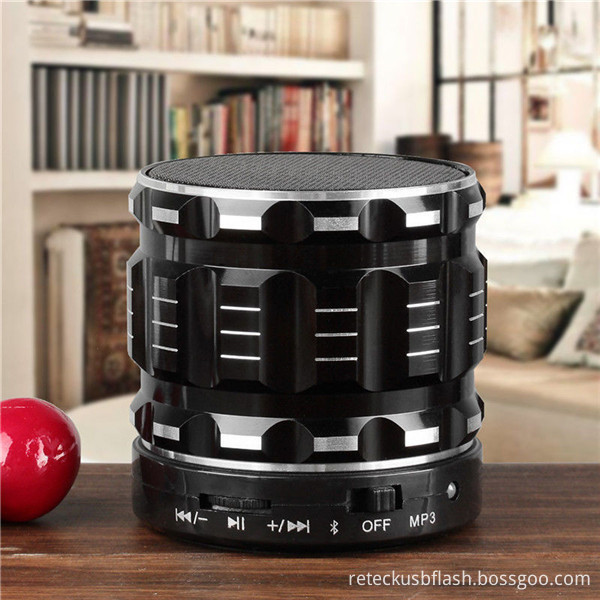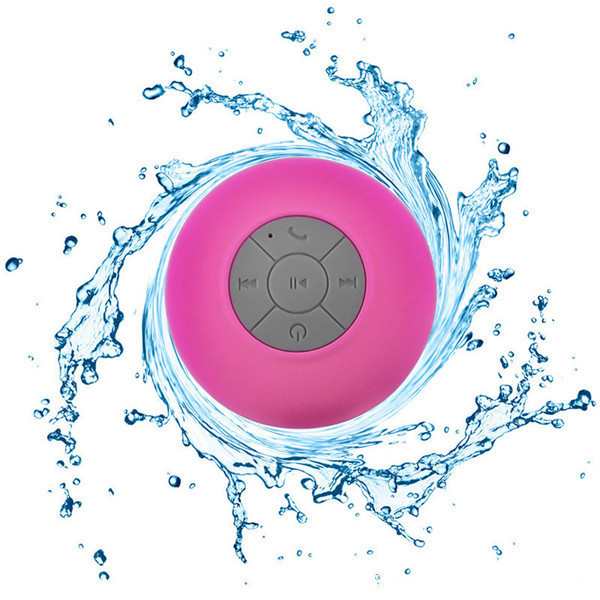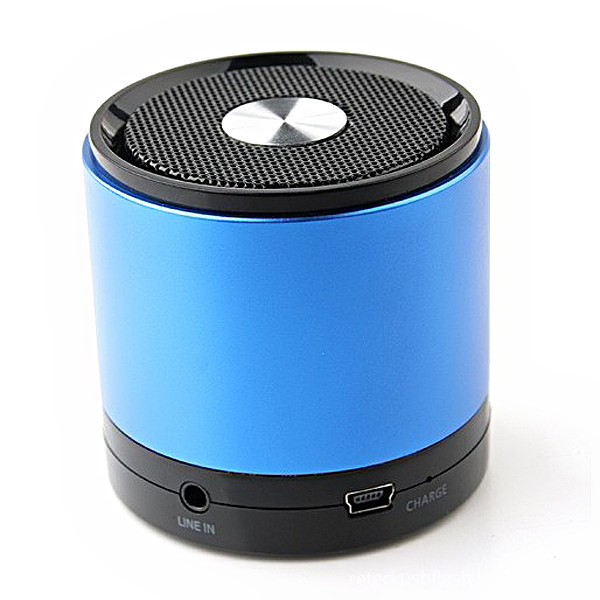In the past two years, LED has become a pioneer in the new energy lighting industry with a hot attitude. The output value of LED lighting and related industries in Guangdong Province has exceeded 30 billion yuan. This year, Guangdong Province has listed LED lighting industry together with high-end new electronic information and electric vehicle industry as one of the three strategic emerging industries in the province.
LEDs have caused the lighting industry to reshuffle, and in the capital market, LEDs have also been popular. The stock prices of listed companies such as Dehao Runda and Silan Micro have risen sharply, and companies such as Zhen Mingli, Xuelaite and NVC Lighting are vying to go public. However, there are also many people in the industry who are worried about the blind investment phenomenon. They reminded that there are still many needs for improvement in the domestic LED industry, and there are still thresholds for achieving great development. What is the current status of LEDs? What kind of problems are there? The reporters have been divided into several ways and interviewed a number of professionals.
Technology: Do not be a pioneer
Guangdong Province is the largest application market for the domestic LED lighting industry, and LED packaging production accounts for about 70% of the country. So far, there are still a lot of capital going forward to catch the LED. Obviously, testing the emerging LED industry is nothing more than two kinds of results: it will become a martyr if it is not a pioneer. To be a pioneer, you must first understand: Is domestic LED technology mature? What is the maturity?
Low technical content, no core patent
Huang Yumin (Secretary of the Secretariat of the Chinese Lighting Designers Association): LED is actually a kind of light-emitting diode, which first appeared in the 1930s. At present, domestic LEDs are too little in core technology. The patents are mainly in the hands of European and American giants. The industry is mainly concentrated in the downstream, mainly for the packaging of lamps and lamps, and the production of a small number of lamp beads. The industrial chain is not complete enough, and the technical content is relatively Lower, the manufacturer's profit margin is not large. Of course, there are already research institutes in China, but they are still in the experimental stage and have not yet reached the application level.
Domestic LED technology is not mature enough. For example, LEDs are very sensitive to temperature, but most domestic products are difficult to do in terms of heat dissipation, which affects the efficacy of LED lamps. According to statistics, the current luminous efficiency of 1W, the laboratory data reaches 100Lux, but in fact most of them only 40Lux, there are not many products that can achieve 60~70Lux. From the perspective of the life of the LED, the laboratory data is 100,000 hours, but this is the conclusion obtained under certain conditions of temperature and humidity. In practical applications, it is only about 20,000 hours. In addition, the optical system needs to be improved. In the lighting design, the effect of LED light color is not the best, and the price of LED is relatively high. In terms of overall cost performance, LEDs at this stage cannot replace traditional light sources, but it is indeed a direction for future lighting development. Therefore, lighting designers generally adopt a cautious welcome attitude towards LED lights.
Not suitable for large-scale promotion
Li Yong (Chief Engineer of Shenzhen Beilinyuan Landscape and Architectural Planning and Design Institute): The technology of LED is still developing. In the single application, there is no problem in the table lamp, but if the application technology is promoted on a large scale, it is still not mature enough. The application of the LED on the marking is mainly the effect lighting of the facade, which can be hooked, matrix, and high in performance width. However, it is not a substitute for sodium lamps for the time being, and sodium lamps have the advantages of high light efficiency. In particular, LEDs cannot be used for high-power lighting such as roads. The technologies for energy saving and heat dissipation are still immature. Therefore, brand-name companies such as Philips and Opt have not introduced LED street lamps. In addition, it is important to emphasize that the process of the LED lamp itself is good, but the process is limited due to the unevenness of the process.
How to use is the key when the current technology is not fully mature. General functional lighting, basically do not use LED lights, decorative and iconic lighting only use LED lights, such as the KFC logo, the use of back light, with internal light for illumination, uniform illumination, long life.
Domestic LEDs are mainly for midstream and downstream products
Zhao Haitian (Professor, Department of Architecture, Shenzhen University): LED has upstream and downstream products, and China's current LED products are mostly middle and downstream products. At present, the highland of LED is occupied by foreign countries, because its research and development frontier is abroad. China does not currently have core technology.
Domestic LED chips, extension is not mature
Fan Banghong (Chairman of Zhenmingli Group Co., Ltd.): At present, the extension and chip of LED are still immature. Our company originally needs to spend tens of millions of dollars to buy chips every year. Currently, Taiwan, Japan and South Korea are more mature. Wait. Among them, Taiwan has an advantage in terms of quality, output and price. Domestic chips are seriously out of stock. Now, the company has planned to set up an LED epitaxial chip production project in Jiangmen High-tech Zone. The project equipment scale is 60 MOCVD equipment.
Diverse LED manufacturing models
Yue Peng (General Manager of Huari Times Lighting): With the rapid decline in the price of semiconductor lighting products and the continuous maturity of application technology, the promotion of semiconductor lighting at home and abroad in the fields of municipal, household, commercial, industrial and various professional fields will surely Accelerating, and China has obvious advantages in product manufacturing, and is expected to become the manufacturing center of LED lighting products, and the manufacturing model will be reflected in various forms such as OEM, ODM and independent brand production and marketing; although China's current LED backlight module The group industry is still relatively backward, but the LCD panel industry is gradually shifting to China. China is likely to become the world's largest LCD TV production base, synchronized with the production of LCD TVs, and the production of post-process components such as LED backlight modules. It will be concentrated in China, and the prospects for domestic production and manufacturing are huge.
Market: open PARTY or sell cabbage
Chip, epitaxy, preparation, packaging and design applications, in the entire LED industry chain, due to the lower technical barriers to entry, downstream design applications are the most concentrated part of China's LED companies, Guangdong Province is no exception. This kind of congenital deficiency makes domestic products always low in the international market. Some people even feel that foreigners' LED exhibition halls enjoy wine tasting and negotiate business, it seems to open PARTY; Chinese people put LED lights on the stage and foreign merchants bargain, as if selling cabbage! It can be seen that no matter how invincible the LED industry, we must not Unconsciously, its development still needs to overcome many problems: such as uneven product quality, intensified price warfare and foreign LED companies can also take advantage of design, brand and service matching, and can also control the international industrial chain. The profits of the middle and lower reaches, while the domestic companies are more playing the role of manufacturing.
The price is opaque and the product is mixed.
Huang Yumin (Secretary of the Secretariat of the Chinese Lighting Designers Association): In recent years, the domestic LED market has gradually become popular, mainly for several reasons. First, its technology has improved, the product has achieved mass production; second, its luminous efficiency. The price has been lowered, and the market has entered the market. Third, a large amount of funds have entered, and 500 billion yuan has entered the market. In general, LED is a development trend of future lighting, and has received strong support from the state, but the current market is still immature, and the price is also uneven. For example, a lamp bead can vary from a few cents to a few hundred yuan (RMB), while lamps with low-grade lamp beads are of course low in price, and vice versa. On the surface, it is difficult for ordinary consumers to distinguish the quality of the lamp beads. It is naturally difficult to judge the quality of the LED lamps.
At present, there are some blind investment phenomena in the LED industry, as well as the situation of low-end competition. Some enterprises start price wars instead of technology than services. There are even some companies that fish in troubled waters, disrupting the entire market order and creating a number of different products. Moreover, since LED is still an emerging industry in China, it has not yet introduced relevant national industry standards, making it more difficult to distinguish the authenticity of products. Even professionals can only judge by experience.
Blind use, the products are not good
Li Yong (Chief Engineer of Shenzhen Beilinyuan Landscape and Architectural Planning and Design Institute): At present, LED lighting has blind use and mixed products. Now there are many production lines in the country, and some have agreements with the local government. The local roads and streets must be replaced with LED lights. In fact, all street lamps use LED lights. There are several small LED lights under each lamp. Each has a power supply unit and a circuit board. If one of them is broken, the whole lamp must be replaced. If there is no technology in the current technology. In the case of full maturity, the widespread use of LED lights is bound to cause waste.
In addition, the domestic LED market is still mixed. The national standard for LEDs is currently being developed. Of course, it is better if you can directly use foreign standards.
LED market structure is excessive
Zhao Haitian (Professor, Department of Architecture, Shenzhen University): One topic that I am particularly concerned about in the LED market is structural excess, and all of it is not enough. As far as my observations are concerned, there have been slenders in this area, mainly in the case of certain product varieties, especially those with low thresholds. The manufacturers of these products have emerged and swarmed in terms of product quality and performance. All have yet to be further improved.
Market chaos becomes the bottleneck of enterprise development
Fan Banghong (Chairman of Zhenmingli Group Co., Ltd.): At present, the bottleneck we encounter in development is the market chaos. Some domestic enterprises have not met the requirements in terms of brightness and other aspects, and will put LED lights on the market. They buy chips back and produce them directly. In fact, LEDs must be integrated upstream and downstream to produce qualified LED lights, otherwise it will not save electricity.
LED is related to technical issues and cost issues. At present, the price is still expensive, and we are committed to lowering prices. It is estimated that the cost will drop, because the LED saves electricity, so the penetration rate will be high, accounting for 20% of the lighting. If you can replace ordinary lighting in the future, then the power plant can be avoided.
LED industry concentration is further enhanced
Yue Peng (General Manager of Huari Times Lighting): Although many foreign survey reports and analysis data show that in the second half of 2008, the European and American markets shrank and orders decreased, which greatly increased the uncertainty faced by LED companies. But it turns out that even under this premise, the semiconductor lighting market has grown by more than 30% in 2009.
On the enterprise side, companies with advantages in research and development, capital, market, manufacturing, etc. are expected to rapidly expand the scale of related industries, and the concentration of industries will be improved. Inspired by the results of the operation of semiconductor lighting capital in 2009, more companies will plan to go public or introduce strategic investors. The competition of enterprises will shift from product technology to capital and market. This will also lead to the industrial structure. Related adjustments. From the perspective of the industry as a whole, this adjustment will help domestic companies to enter the more complex areas of backlighting, automobiles, lighting and other advantages and gain advantages. In the enterprise competition, the relevant measures of the government will also be a very key factor. It is expected that the focus of governments at all levels will shift from macro guidance to practical measures that focus more on project implementation.
Energy saving: Fu Li beats Li Gui
When it comes to LEDs, people first think of green, energy saving and environmental protection. Is LED really equivalent to green, energy-saving, and environmentally friendly? In fact, there are many different opinions in the lighting industry. However, there is a reality that can be clearly seen: the quality of LED products that are currently flooding the domestic market is not enough, and it is not green, energy-saving, environmentally friendly, and long-lived. Helping Li to fight Li Gui, cultivating and developing truly green, energy-saving and environmentally friendly LED products has become the common wish and goal of the whole industry!
LED = energy saving
Fan Banghong (Chairman of Zhenmingli Group Co., Ltd.): LED is equal to energy saving, the life of the chip is up to 50,000 hours, while ordinary lighting is only 200-300 hours, which can save 40-60% of electricity, including power supply. There are new technologies in heat dissipation, light source and packaging. The energy saving of LED is also reflected in the fact that it has no heat problem. The ordinary lighting can only emit light when it reaches a certain amount of heat, and the LED light is directly illuminated. Therefore, LEDs must have market demand and must be energy-saving.
The technology of LEDs lies in epitaxy and chips. Chips, packaging, that is interlocking, our company two years ago, a group of mature Taiwan team stationed in Jiangmen, they have experience, now self-developed chips, compete with Taiwan, currently can produce 15,000 chips per day Among them, 5000 pieces are for sale, 10,000 pieces are for personal use, and they are continuously improved during use.
LEDs need to replace ordinary lighting, it takes 2-3 years, by 2015, LED can be achieved, and we have increased production in several major cities. At this stage, Taiwan's chips are in short supply and are seriously out of stock. After the new project is launched, it is expected to solve the problem. The LED luminous efficiency is good, the packaging technology is mature, and the environmental awareness rises, so it has become an industry hotspot.
LED≠energy saving
Huang Yumin (Secretary of the Secretariat of the Chinese Lighting Designers Association): There are two LED cores, one is light efficiency and the other is heat dissipation. The light effect and heat dissipation are arranged and combined, and four products can appear: low luminous efficiency + low heat dissipation; low luminous efficiency + high heat dissipation; high luminous efficiency + low heat dissipation; high luminous efficiency + high heat dissipation. Among them, high-efficiency products can be called energy-saving products, and at the same time, after meeting high heat dissipation, they can be called energy-saving + environmental protection products. Low-light-efficiency products are not energy-saving, they are often energy-consuming products, and run counter to the concept of green lighting.
Needless to say, LED is the future direction of development. But LEDs can't be equated with energy savings, at least in the current technology. In short, not all lighting designs are suitable for LEDs, and LED lighting design does not necessarily mean energy savings. In order to save energy, lighting designers need to use the rationality of light distribution, scientific and technical guarantees to make solutions, so that customers can achieve an advantage in energy saving, and at the same time take into account the customer's cost performance. There may be LEDs inside, maybe metal halide lamps, and so on.
LED energy saving key application
Li Yong (Chief Engineer of Shenzhen Beilinyuan Landscape and Architectural Planning and Design Institute): LED is not energy-saving, the key depends on the application. When using LED lights on the road, it will not save electricity. However, the traffic light is suitable for use with back light transmission, low power, and low heat generation. However, LED must be the future development direction of the country. I believe that with the advancement of technology, the scope of application will be expanded.
Low carbon and green lighting are different. Low carbon is closely related to ecology. In addition to energy conservation and green, low-carbon landscapes are better combined with regional ecology. For example, in the design of the greenway, the results are applied to it. The greenway runs through the green space system, through mountainous areas, orchards, etc., through economical forests and orchards. If you don't pay attention to the light source, it will attract insects at night and be harmful to the orchard. How to attract low insects, what kind of light can be used to not attract pests, but there is no way to kill beneficial insects. The wavelength of 300MM can be filtered out and the insects can't feel it. Special-wavelength LED lamps, such as ceramic metal halide lamps, have low traps, and we used them in the design of greenways.
LEDs used in road lighting may not save energy
Xu Qinghui (Chief Designer of Guangzhou Kebo Lighting Co., Ltd.): At present, one of the largest functional lighting applications for LED applications is road lighting. So, is there really a 50% or even 70% energy saving rate for LEDs instead of high-pressure sodium lamps? We look at it from several aspects:
One is the competition of luminous flux. Nowadays, commercialized domestic white LED products can be used in large quantities, generally 60~80Lm/W. Imported high-quality LED light efficiency can reach 80~100Lm/W, or far less than 140Lm/W of high-pressure sodium lamp.
The second is the competition of lighting efficiency. LEDs are single-sided, and the efficiency of light is much higher than that of a scattered sodium lamp. However, according to the rigorous test of a university, the overall light effect of the lamp or the sodium lamp has the upper hand.
The third is the competition between white light and yellow light: many manufacturers promote white light for the human eye, the efficiency of the intermediate vision will be 70% or even 100% higher than the yellow light. But before the rigorous research conclusions come out, I will not accept it for the time being.
Based on the above three points, I believe that if the same illuminance is to be achieved, the current LED street light can not replace the sodium lamp. But in fact, many LED street lamp manufacturers are using the energy management model to collect the saved electricity bill. Where does this energy saving rate come from? I think that reasonable design illumination is the key to the problem.
LED energy saving lacks scientific evaluation
Zhao Haitian (Professor, Department of Architecture, Shenzhen University): Whether we can save energy or not, we can't evaluate it out of thin sentences in one sentence, but we must have a comparative object and a systematic scientific evaluation basis. Therefore, there is a prominent problem to be solved: At present, in terms of energy conservation, China still lacks a scientific basis for argumentation and definition. What is energy conservation? Is energy saving just energy saving? Obviously, we do not have such a The research work on evaluation criteria lacks scientific basis. For example, when LEDs are used as outdoor lighting, they have to consider a penetrating factor, but at present we lack an effective scientific basis for this, but simply use a sentence to evaluate whether it is energy-saving. This is unscientific, so One of the current priorities is to establish a systematic scientific lighting energy-saving evaluation standard.
From the perspective of its development, whether it is solid light or gas light, it is obviously not the era of traditional light sources. The 21st century will be the century of LED, just because of the current production capacity, quality, advancement and performance of LED products. There is a large room for development, so it will take some time to discover that its future will be the mainstream of the light source.
LED is more green
Yue Peng (General Manager of Huari Times Lighting): LED has two advantages: energy saving and environmental protection. Therefore, it has been supported by the national industrial policy. At present, China has formed five LED industrialization bases in Shanghai, Dalian, Nanchang, Xiamen and Shenzhen. LED green, healthy, high-pressure sodium lamps, fluorescent lamps, HID and other gas discharge lamps all contain mercury, and mercury is extremely harmful to the human body; according to estimates, each 18W energy-saving fluorescent lamp contains 18 to 34 mg of mercury, 40W fluorescent lamps. Containing 44-56 mg of mercury, mercury can evaporate at room temperature. People inhaling 5-6 mg of mercury will have difficulty breathing, dizziness and nausea, and muscle spasm. Inhalation of 8-10 mg can cause liver and kidney failure and even death.

The Opportunity stands in front of you, the high-quality of Bluetooth Speaker, Waterproof Bluetooth Speaker, Wireless Bluetooth Speaker, Mini Bluetooth Speaker from Supplier & Manufacturer In China.
Bluetooth speaker refers to the built-in Bluetooth chip, Bluetooth connectivity to replace traditional wire connecting the audio equipment, by connecting your phone and tablet, notebook and other Bluetooth playback devices, to achieve the purpose of convenience.


Bluetooth speaker portable speaker to the main shape generally more portable, Bluetooth speaker technology with its convenient characteristics of people are being noticed and consumer acceptance, the common market of Bluetooth speakers, mostly mono speaker (single speaker unit), but also the emergence of a number of excellent sound quality multi-channel speakers (two or more speaker units).

Bluetooth speaker is very Multifunctional Portable Cool Fun Mini design. Bluetooth speaker also have a lot of functions such as Hands-free Calls, Bluetooth, Water Resistant, Shower Speaker, with Sucker and so on. It Support Bluetooth/Line in Audio connection, FM radio, TF card, Hards-free calling and so on.

Wireless Bluetooth Input of Bluetooth speaker Compatible with iPhone, iPad and all mobiles with bluetooth device.
Bluetooth Speaker
Bluetooth Speaker,Waterproof Bluetooth Speaker,Wireless Bluetooth Speaker,Mini Bluetooth Speaker
Reteck Storage Device Co., Ltd. , http://www.reteck.com
